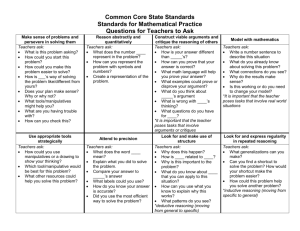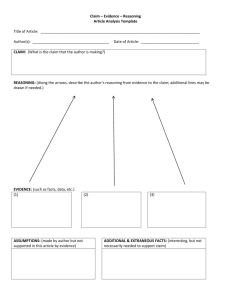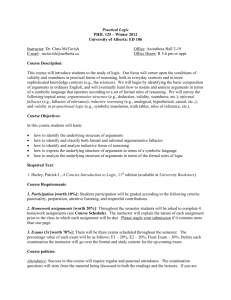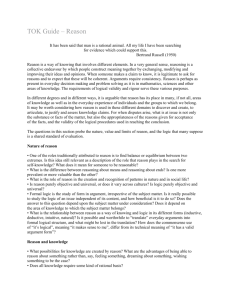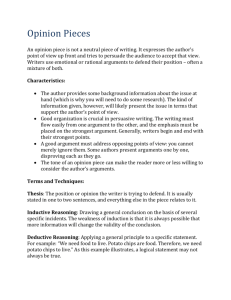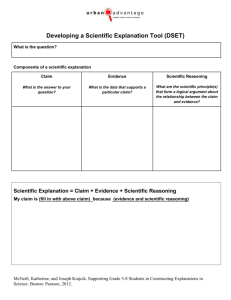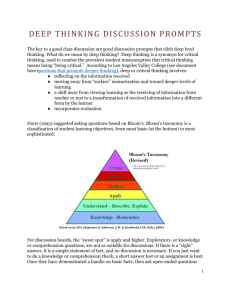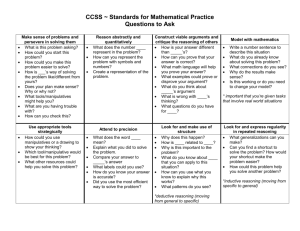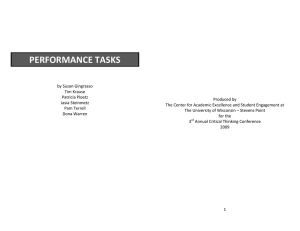Hawaii Pacific University
advertisement
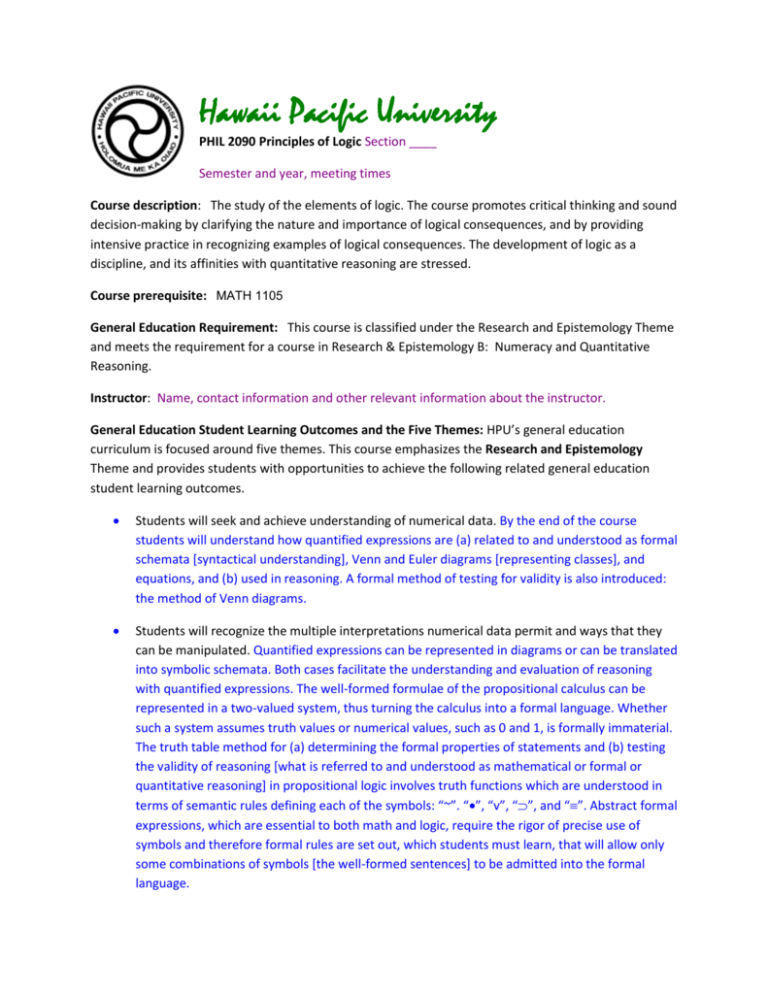
Hawaii Pacific University PHIL 2090 Principles of Logic Section ____ Semester and year, meeting times Course description: The study of the elements of logic. The course promotes critical thinking and sound decision-making by clarifying the nature and importance of logical consequences, and by providing intensive practice in recognizing examples of logical consequences. The development of logic as a discipline, and its affinities with quantitative reasoning are stressed. Course prerequisite: MATH 1105 General Education Requirement: This course is classified under the Research and Epistemology Theme and meets the requirement for a course in Research & Epistemology B: Numeracy and Quantitative Reasoning. Instructor: Name, contact information and other relevant information about the instructor. General Education Student Learning Outcomes and the Five Themes: HPU’s general education curriculum is focused around five themes. This course emphasizes the Research and Epistemology Theme and provides students with opportunities to achieve the following related general education student learning outcomes. Students will seek and achieve understanding of numerical data. By the end of the course students will understand how quantified expressions are (a) related to and understood as formal schemata [syntactical understanding], Venn and Euler diagrams [representing classes], and equations, and (b) used in reasoning. A formal method of testing for validity is also introduced: the method of Venn diagrams. Students will recognize the multiple interpretations numerical data permit and ways that they can be manipulated. Quantified expressions can be represented in diagrams or can be translated into symbolic schemata. Both cases facilitate the understanding and evaluation of reasoning with quantified expressions. The well-formed formulae of the propositional calculus can be represented in a two-valued system, thus turning the calculus into a formal language. Whether such a system assumes truth values or numerical values, such as 0 and 1, is formally immaterial. The truth table method for (a) determining the formal properties of statements and (b) testing the validity of reasoning [what is referred to and understood as mathematical or formal or quantitative reasoning] in propositional logic involves truth functions which are understood in terms of semantic rules defining each of the symbols: “~”. “”, “v”, “”, and “”. Abstract formal expressions, which are essential to both math and logic, require the rigor of precise use of symbols and therefore formal rules are set out, which students must learn, that will allow only some combinations of symbols [the well-formed sentences] to be admitted into the formal language. Students will identify a research question or problem, gather and organize relevant information, apply problem solving strategies, and communicate the results to others. The course focuses on problem-solving; students share their results and the strategies for obtaining them. For example, given a valid argument in a natural language such as English, students are able to translate that argument into the language of propositional logic and then to use the method of formal proof to demonstrate the validity of that argument. There is no formal decision procedure for constructing a formal proof of validity, and therefore a set of strategies can be developed, a posteriori, for demonstrating the validity of arguments using the method of formal proof. The class works as a group in sharing and discussing their various strategies for constructing a formal proof of validity. Students will use reasoning skills, such as identifying assumptions, considering multiple perspectives and positions, including one’s own, making inferences and drawing conclusions, to advance an argument supported by reasons and evidence. We provide a precise definition of argument. We analyze arguments, arrange them into “standard form” and introduce a method of diagramming arguments. We draw some important distinctions: dependent/independent premises; simple/compound arguments. Diagrams function to show in graphic form what the logical structure of an argument is. Students train their capacity to make abstractions. They can begin to understand how many arguments differing in content can all share the same singular pattern of reasoning, thus understand “formal or mathematical” reasoning. The informal study of logic involves the study of fallacies. Students, in their discussion of fallacies [errors in reasoning] have an opportunity to share their perspectives on a given fallacy. For example, it is sometime difficult to draw a line between different fallacies of relevance or fallacies of ambiguity. Note: Purple text shows places where specific course information must be filled in. Red text contains explanatory notes to the instructor which should be deleted before using the syllabus. Blue explanations above should be rephrased by the individual instructor to reflect the specific approach in that section of the course. Course specific outcomes below are an example and may also be rephrased or modified by the instructor. Course-Specific Student Learning Outcomes for PHIL 2090 Principles of Logic This course is designed to give students the opportunity to achieve the following learning outcomes. 1. 2. 3. 4. 5. 6. Mastery of the basic principles of logic pertaining to language, deduction and induction. Mastery of the ability to analyze arguments found in literature, conversation and other settings. Mastery of the ability to detect and correct logical fallacies in arguments. Mastery of the rudiments of classical (Aristotelian) inductive logic. Mastery of the rudiments of modern (Symbolic logic). Mastery of the techniques for solving logic problems. For the rest of these required syllabus items see the details in the faculty handbook. Delete this note once the syllabus is complete. For online courses there are some additional requirements given at this link. Please note that element 4 on the sample syllabus at the link above (relation of the course to the five themes) is not needed because it is covered under the “General Education Student Learning Outcomes and the Five Themes” section. Texts Assignments and mode of evaluation Summary of important dates and deadlines (if the schedule is a separate document and due dates are not given with the description of the assignments). Class rules and policies (including regarding attendance, late work and academic dishonesty) Schedule of events (may be attached separately)
